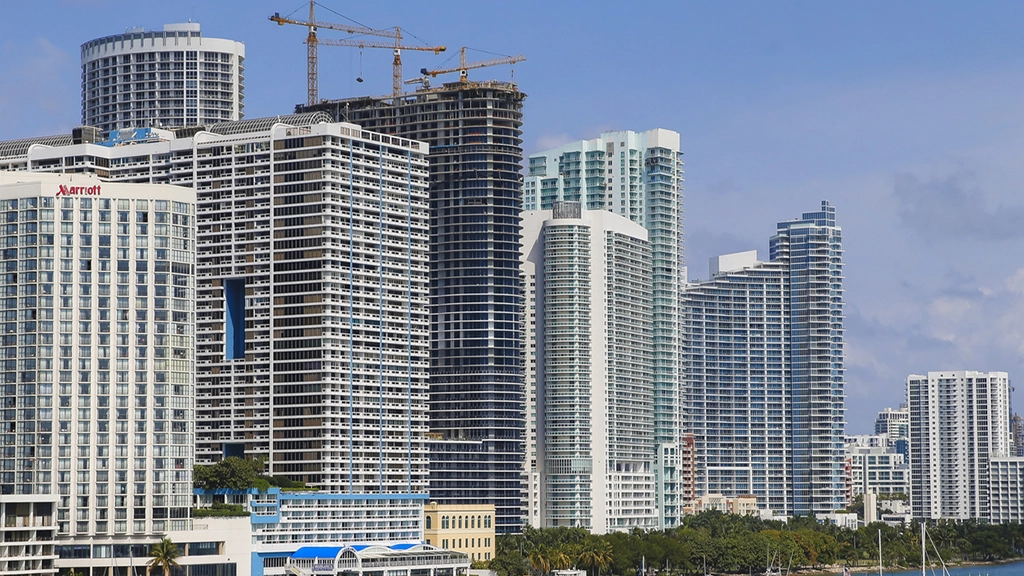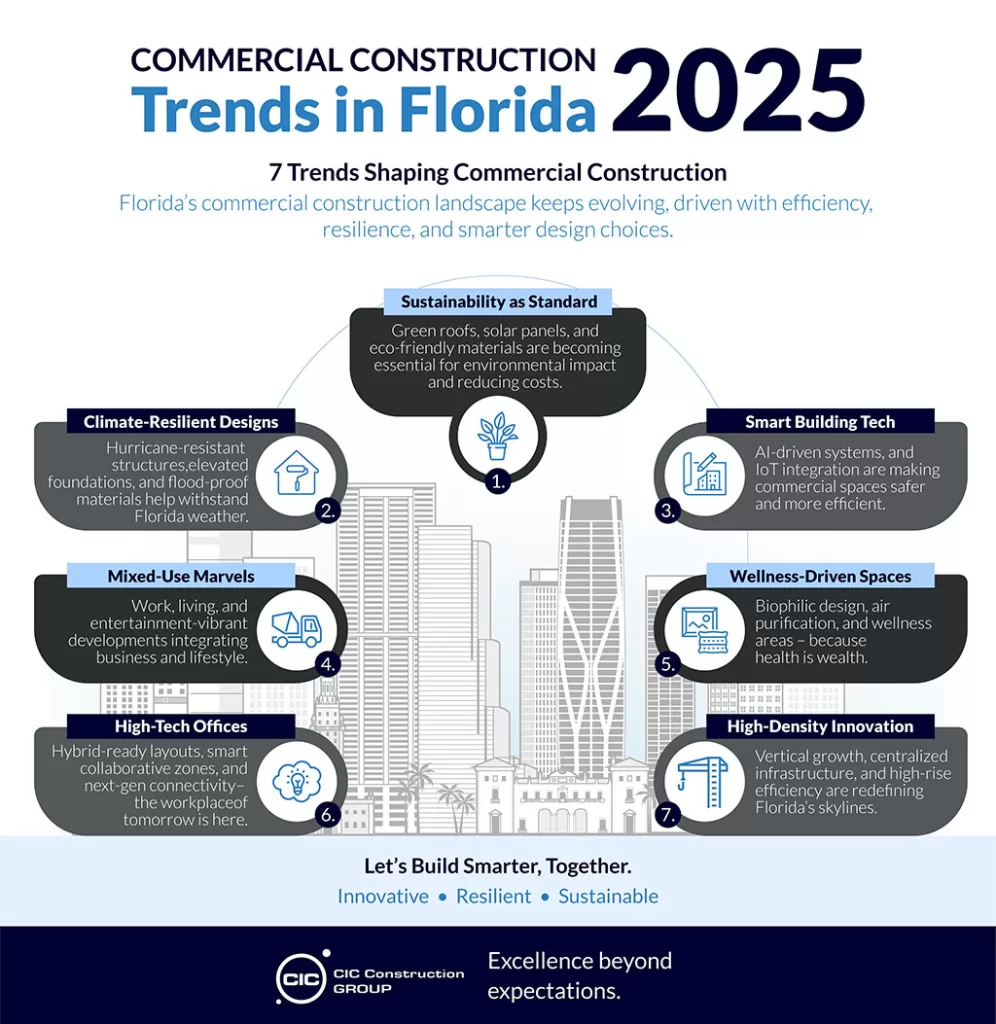



As Florida continues to experience unprecedented growth, the commercial construction sector is evolving rapidly to meet new challenges and opportunities. With innovative technologies, shifting market demands, and increasing environmental considerations, the industry is witnessing transformative changes that will define the future of commercial building in the Sunshine State.
Florida’s commercial construction landscape is experiencing a remarkable transformation driven by population growth, technological advancement, and changing business needs. As we look toward 2025, several key trends are emerging that will shape the industry’s future.
Sustainable construction is no longer a trend but a baseline expectation. Florida developers are integrating eco-friendly practices not just to comply with regulations but to meet consumer demand for greener infrastructure. Key elements of sustainable commercial projects include:
With Florida’s vulnerability to climate change, sustainability goes hand-in-hand with resilience. Buildings that are energy-efficient and environmentally friendly are also designed to withstand the state’s extreme weather conditions.
Florida’s susceptibility to hurricanes, flooding, and rising sea levels has made climate resilience a top priority. Construction projects now emphasize materials and designs that can endure extreme weather:
Resilience isn’t just about survival; it’s about ensuring that commercial properties remain operational during and after adverse events, a critical factor for Florida’s business hubs.
Smart technology continues to revolutionize Florida’s commercial construction. By integrating the Internet of Things (IoT), artificial intelligence (AI), and advanced automation systems, buildings are becoming more efficient and user-friendly:
These technologies are particularly attractive to tenants in high-tech office spaces and retail developments, positioning smart buildings as a competitive advantage.
Florida’s urban centers, such as Miami, Tampa, and Orlando, are embracing mixed-use developments to meet the needs of growing populations and diverse businesses. These developments integrate residential, commercial, and recreational spaces, offering:
By creating dynamic, multi-functional spaces, these projects contribute to economic growth and enhance the quality of life in Florida’s urban areas.
Post-pandemic awareness has driven demand for wellness-oriented commercial spaces. Developers are incorporating features that prioritize health, productivity, and well-being:
These wellness-focused features not only enhance tenant satisfaction but also improve employee productivity and retention for businesses.
Florida’s thriving tech and finance sectors are fueling demand for modern office spaces equipped with cutting-edge technology. Key features include:
As the competition for talent intensifies, companies are using high-tech office spaces to attract top talent and create environments that support collaboration and creativity.
To maximize space and address urbanization, Florida’s cities are witnessing a rise in high-density commercial developments. These projects focus on:
High-density projects are vital for balancing Florida’s economic growth with environmental and infrastructural sustainability.
The trends shaping Florida’s commercial construction industry reflect a dynamic balance between innovation, sustainability, and resilience. Developers are building smarter, greener, and more adaptive spaces that cater to evolving business needs and environmental challenges.
As we look ahead, the emphasis on wellness, technology, and mixed-use designs will continue to define the industry, ensuring that Florida remains a leader in commercial construction. For businesses and developers, staying informed about these trends is essential to achieving long-term success in this competitive market.


Whether you’re planning a new development or exploring opportunities to upgrade existing properties, partnering with experienced industry leaders ensures your project stands out. Call our Florida Office 407-269-5151 and Contact us, we combine expertise, innovation, and a commitment to excellence to deliver projects that shape the future of Florida’s commercial landscape.